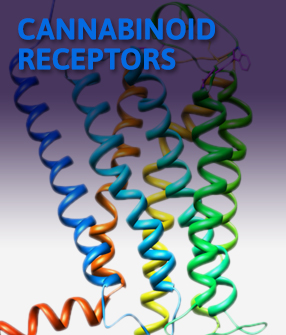
The research focus of my laboratory is on the structure and function of membrane-associated peptides and proteins. Membrane proteins are an especially interesting area of investigation. (1.) Although central to cell vitality, membrane proteins are particularly difficult to study due to the incompatibility of these hydrophobic macromolecules with classical methods of analysis. We are developing new and creative strategies for studying membrane proteins. (2.) Membrane proteins are critical to biological function. They are important in cell-cell communication, the selective passage of ions, metabolites, proteins, and information – i.e. they serve as sensors of the extracellular medium and transmit that information inside the cell. We aim to understand this signal transduction process. (3.) Membrane proteins are often targets for therapeutic agents. They are accessible to agents delivered via the blood stream; they can bind therapeutic agents specifically and selectively, reducing side effects; and the consequence of binding the membrane protein is transmitted inside the cell via membrane protein conformational changes. We are examining new ligands that alter membrane protein structure and which provide clues to therapeutic ligand design.

The human cannabinoid receptor one (CB1) binds Δ9-tetrahydrocannabinol, the psychoactive component of Cannabis sativa L., and other cannabimimetic compounds. It is a G-protein coupled receptor (GPCR) that is associated with the central nervous system where it modulates synaptic transmission. Considerable excitement surrounds the therapeutic potential of CB1 including to regulate appetite, for the relief of neuropathic pain, the management of multiple sclerosis, and to prevent relapse to the use of drugs of abuse. CB1 exhibits basal activity and thus is at a pivotal point for conversion to either the fully inactive or multiple active forms. It preferentially couples to Gi but can couple to Gs proteins. We recently showed that CB1 can also mediate signaling via G protein–independent mechanisms. Thus, the CB1 structure has the conformational flexibility to adopt multiple forms with different physiological consequences. Using a combination of cellular, biochemical, and biophysical strategies, we are identifying the molecular mechanisms underlying CB1 ligand-induced differential signaling and its regulation by different binding partners.

A key issue in cell biology centers on how proteins that function in extracytoplasmic locations are correctly localized following their cytoplasmic synthesis. These proteins are typically synthesized as preproteins with an amino-terminal, cleavable signal peptide that earmarks the protein for transport and interfaces with components of the membrane-associated translocation machinery. Little is known about how these components function in concert to achieve the transport process, yet many human diseases result from defects in protein transport including craniofacial malformations, blood diseases, and neurological diseases. Our research in this area centers on Sec-dependent transport in Escherichia coli which provides a valuable model system of protein transport. We use our newly developed biochemical and biophysical strategies, in vitro and in vivo, to examine associations with SecA and signal peptidase, and to probe the structural aspects which render these receptive to transfer of the preprotein through the Sec relay system. These are key components required for the entrance and exit of proteins to the membrane-bound protein conducting channel and they are emerging as valuable antimicrobial targets.